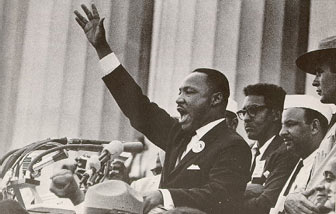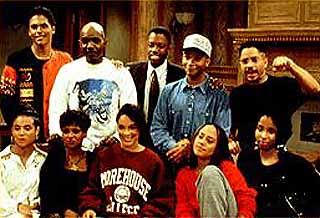Shannon, 21 year old, African American
Culture – That’s where your moral beliefs, values and even fashion come from. It’s your way of life. It’s a reflection of where you live and where you are from.
Diversity – It’s an individual difference as well as a group difference. Diversity brings about a new era or a new form of culture.
Tommy, 47 year old, African American
Culture – The environment that we were raised in or became a part of. It’s our history. We can be in a place with many cultures and sometimes other cultures can influence our behavior and actions. We shouldn’t stereotype because of our culture.
Diversity – Is many, but different group with diverse culture. Be of acceptance that everyone has something to offer.
Catherine, 54 year old, African American
Culture – Your family traditions. Is the things that are important to you such as food, attending church, how you relate to the world. How you are based on your family’s upbringing. Culture belief encompass your ethnicity, we’ve adapted to so many cultures because we were separated from our families.
Diversity – Is a melting pot; a little bit of everyone. We embrace everyone, as a people and as a whole. When we marry we embrace. We embrace them all, but we ourselves are diversity. We’ve learned to adapt to their rules.
The definitions of culture and diversity given by my family and colleagues are all embedded in the information I’ve gained in this course. As they stated in their definitions, culture is our moral beliefs; religion, family values; integrity, family traditions; holidays we celebrate, ancestry; race, how we relate to each other and so on. Culture encompasses everything we do. According to Derman-Sparks & Edwards (2010) “The word culture refers to how particular groups of people live” (p. 55).
My family and colleague’s definition of diversity is on point with what I have learned this far in that diversity is individual differences as well as group differences. It is a melting pot in which we all contribute something different and unique; therefore, we need to embrace each other and accept that everyone has something to offer. Ramsey (2004) states “Likewise, language, traditions, and values of specific ethnic groups evolve as their members absorb and/or resist the influence of other cultures” (p. 4).
As a whole, I don’t think that anything was omitted in their culture definitions. However, I think that their definition of diversity could have been expanded in that diversity encompasses all the aspects of our culture because that is the foundation in which our individual identities are formed. Our culture and diversity intertwine in that our culture traits is what makes us unique and that uniqueness is brought to the forefront when we engage and interact with others. Derman-Sparks & Edwards (2010) states “But when we find ourselves in the midst of another culture, or when we must interact with someone from a different culture, we discover that the way we do things not the only way” (p.55).
I must say I found it to be very intriguing how everyone used different ways to articulate their definitions of culture and diversity, but came up with similar meanings. As they began to tell me what these terms meant to them, the conversation became personal and deep rooted for them. We began discussing their ancestors and how one of the families was owned by a Chinese family. I can’t recall ever having such an intense conversation such as this with my colleagues before this. We made such a connection all I could think about afterwards was the possibility of everyone making a connection as powerful as this, if they would just take the time to learn about the ancestry of each other.
References:
Derman-Sparks, L. & Edwards, J. O. (2010). Anti-bias education for young children and ourselves.
Washington, DC: NAEYC
Ramsey, P. G. (2004). Teaching and learning in a diverse world (pp. 3–6). New York, NY: Teachers
College Press
 One hope that I have when I think about working with children and families who comes from diverse background is that we are all treated as equals deserving respect and acceptance.
One hope that I have when I think about working with children and families who comes from diverse background is that we are all treated as equals deserving respect and acceptance.






 I
I 







 I was a witness to our waiter being a target of bias and prejudices remarks and attitudes.
I was a witness to our waiter being a target of bias and prejudices remarks and attitudes.

 On the sitcom A Different World, Ron Johnson who is an African American college student, was taking bets on a football game from a couple of Caucasian rivalries.
On the sitcom A Different World, Ron Johnson who is an African American college student, was taking bets on a football game from a couple of Caucasian rivalries. plays a prejudice Caucasian who treats anyone outside of his race as though they are inferior to him.
plays a prejudice Caucasian who treats anyone outside of his race as though they are inferior to him.

![Family Bible-NIV[Hardcover] Family Bible-NIV[Hardcover]](http://a4.bing.com/thumb/get?bid=yMpgsGeE3pLDbw&bn=CC&fbid=7wIR63%2bClmj%2b0A&fbn=CC)
